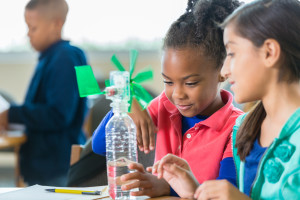
This is personalized learning at its best: Students learn what they need to learn (how to design a science experiment) while getting to choose how to go about it based on their interests (horses) and curiosity (are they smart enough to read?). But, asks McREL’s Bryan Goodwin in his latest Research Matters column in Educational Leadership, how effective is this kind of learning? Does it work for everyone? What does it take to implement it well?
Goodwin points to some promising studies that show benefits, particularly for low-achieving students. A 2015 RAND Corp. study, for example, compared achievement levels of 11,000 low-income and minority students in personalized learning environments with that of similar peers nationwide and found positive effect sizes for both mathematics (0.27) and reading (0.19). Perhaps most impressive was the fact that students who started off below average on national assessments were scoring above average just three years later.
But, Goodwin says, there’s a flip side: Rigorous research is limited and, in some cases, studies showed no effects or even negative effects of personalized learning on achievement—possibly the result of uneven implementation. For personalized learning to succeed, Goodwin cautions, a number of shifts must occur:
- Teachers need to re-imagine themselves less as information providers and more as learning coaches
- Curriculum must be rewritten as competencies or pathways that students can master at their own pace
- Schools must embrace a “fail forward” mentality, allowing students to try and fail and try again
Only then can personalized learning help all students learn not only what they need to learn but also what they most want to learn—like whether horses can read (which, it turns out, they can).
